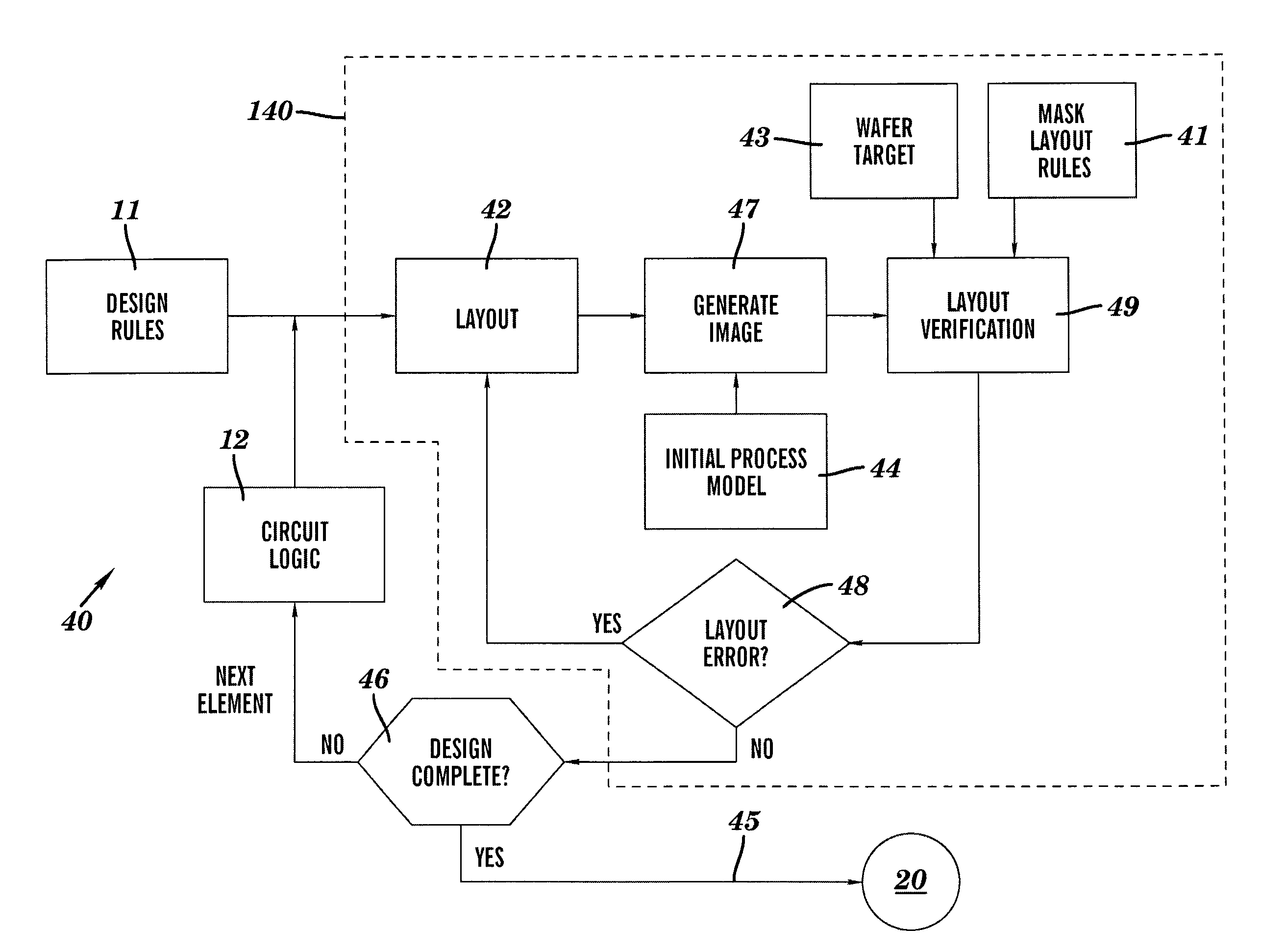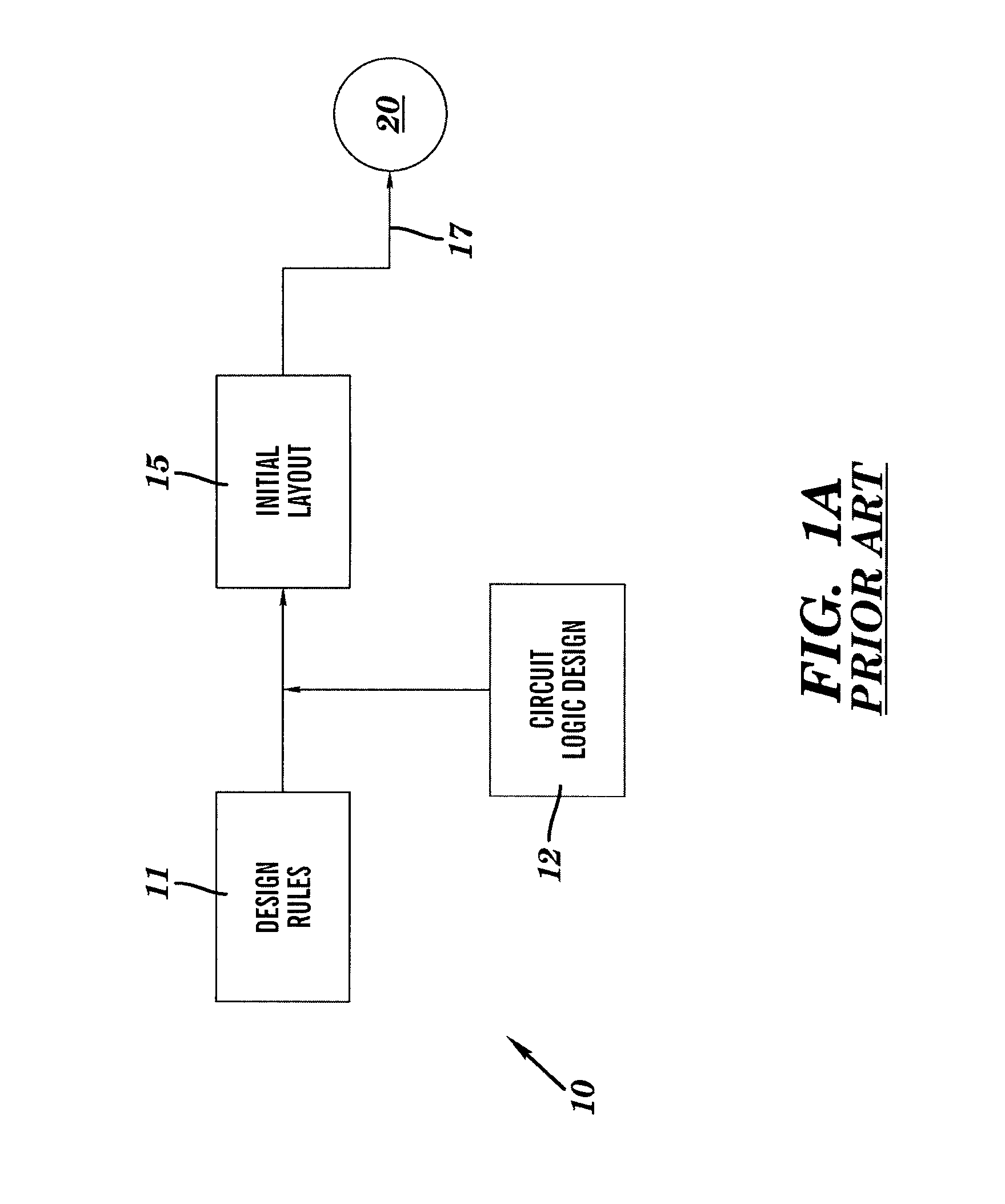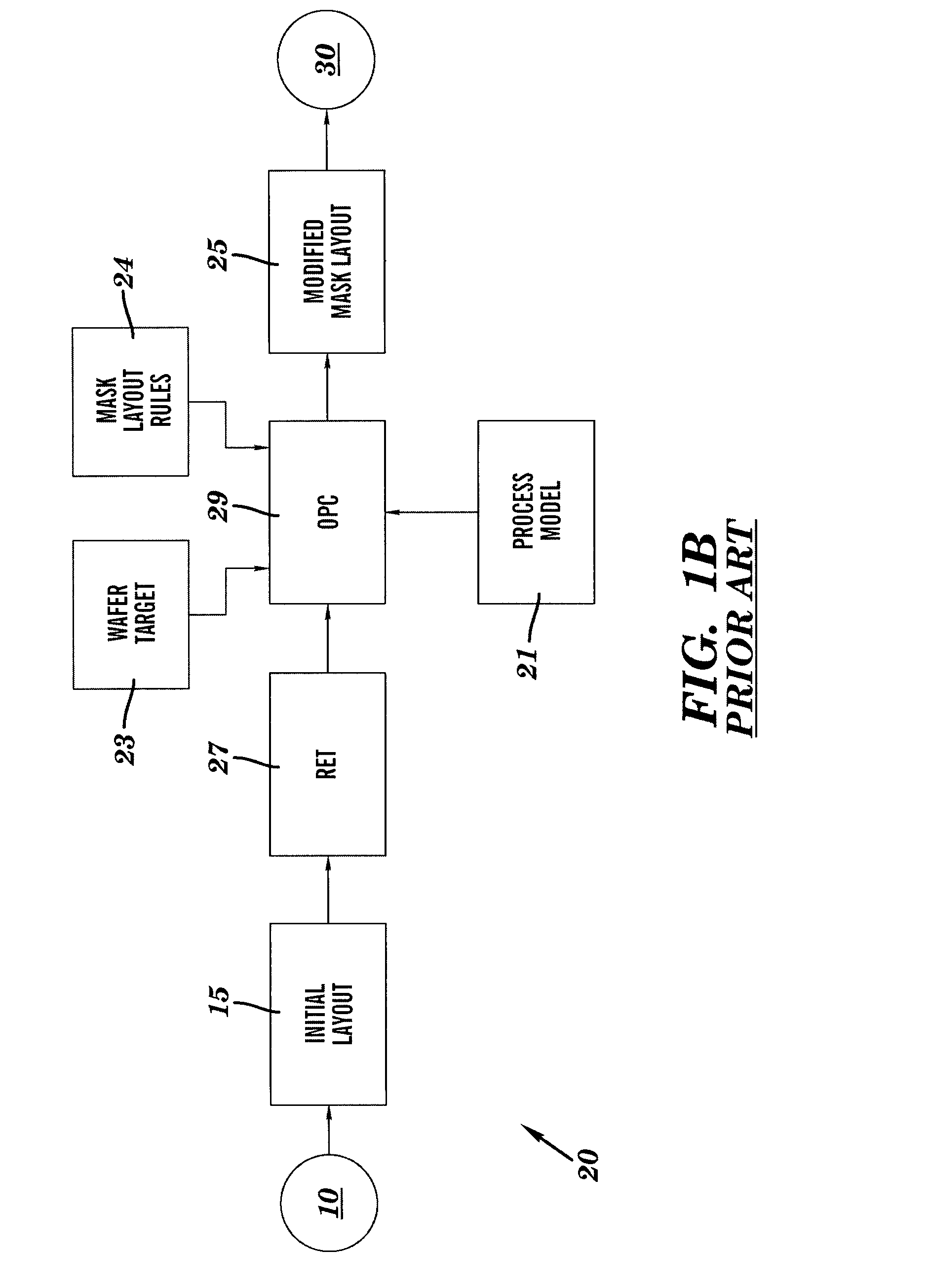Closed-loop design for manufacturability process
a closed-loop design and manufacturability technology, applied in the field of design and manufacture of lithographic masks, can solve the problems of greater fidelity in printing, reduced lithographic accuracy, and inability to reproduce the circuit image precisely on the substrate, etc., and achieves the effect of reducing the computational resource requirements of mbopc and reducing the computational resource requirements
- Summary
- Abstract
- Description
- Claims
- Application Information
AI Technical Summary
Benefits of technology
Problems solved by technology
Method used
Image
Examples
Embodiment Construction
[0058]The present invention will now be described in greater detail by referring to the following discussion with reference to the drawings that accompany the present application. It is observed that the drawings of the present application are provided for illustrative purposes and thus they are not drawn to scale.
[0059]Referring to FIG. 3, one embodiment of the present invention includes, during a design phase 50 of a circuit layout, circuit logic 12 and design rules 11 are provided and used by a designer, typically with the aid of a variety of software tools (not shown for clarity), to arrive at an initial circuit layout 52. In accordance with the present invention, a layout optimization 350 is performed on the layout 52, or a portion or element of the layout 52, during the design phase which uses a lithographic process model / tool 54, preferably a process window model / tool. The process window model / tool 54 may be similar to a model used by a foundry or fab for OPC. The process win...
PUM
 Login to View More
Login to View More Abstract
Description
Claims
Application Information
 Login to View More
Login to View More - R&D
- Intellectual Property
- Life Sciences
- Materials
- Tech Scout
- Unparalleled Data Quality
- Higher Quality Content
- 60% Fewer Hallucinations
Browse by: Latest US Patents, China's latest patents, Technical Efficacy Thesaurus, Application Domain, Technology Topic, Popular Technical Reports.
© 2025 PatSnap. All rights reserved.Legal|Privacy policy|Modern Slavery Act Transparency Statement|Sitemap|About US| Contact US: help@patsnap.com



